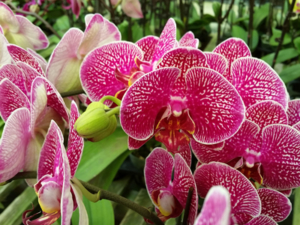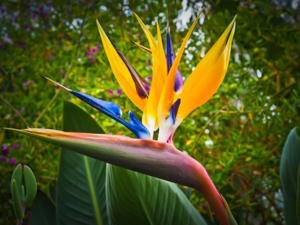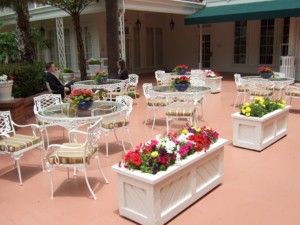Interiorscape Basics
Chapter Seven: Caring for Flowering Plants
Seasonal flowering plant programs are an important addition to interiorscapes. They entice our customers with changing scenery. They add variety and color and must be maintained correctly to get full value from the investment.

Seasonal flowers make great additions to interiorscapes
The lifespan of a seasonal flower indoors depends on the variety of plant used, the amount of light and the water the plant receives. Most flowering plants prefer bright filtered light and evenly moist soil. Many varieties do not like to dry down between watering visits. For this reason, some may need to be watered twice a week or placed on subirrigation.
Most flowering plants should be installed in the early stages of blooming when they are just beginning to show color. The flowers will open over a period of time, extending the enjoyment of the plant. Poinsettias and hydrangeas are two exceptions; if not already in full bloom, they will not peak in an indoor setting. Discard the plant when the leaves yellow and drop or when the flowering cycle is over. Have a new variety installed before the flowering cycle has ended.
Handle flowering plants with care. In cold climates, they must be protected with paper or fiber sleeves and transported in heated vehicles. In warm climates, they should be transported in air-conditioned vehicles. Do not keep plants sleeved for more than 12 hours. Remove plant sleeves carefully. Blossoms and stems are delicate and break easily.
Caring for Exterior Color

Colorful Bird of Paradise enhances exterior spaces
Many interiorscape companies offer exterior color plantings as part of their full service horticultural program. It is important to know how to properly care for these to keep them beautiful through the entire season.
Pinch for Color
Pinching is the key for profuse blooms and top quality flowers. This technique is the ongoing removal of selected flower buds and spent flowers. You must pinch out terminal buds (growing tip) on the first service visit. Pinching forces growth into side branches to create other buds and the result will be to have bushy growth from three or four new side branches where there was only a single one before. Pinching is a bit time consuming but well worth it. Continue pinching several times through the season to increase the branches and keep more flowers coming.
** Tidbit **
It takes Energy to Produce a Bloom A plant has to work hard to push out that flower. And because light is a limiting factor of growth in interiorscapes, if a plant is putting its energy into producing a bloom it doesn’t have the energy to produce or sustain leaves. Most plants are installed in interiorscapes for their interesting foliage, not their flowers.
- Aglaonema – Pinch little flowers off.
- Araceae – Remove buds.
- Codiaeum (croton) – Remove blooms.
- Dieffenbachia – Remove buds.
- Dracaenas – Twist out the flower at bud stage. If left to bloom the leaves will get a sticky sap all over them. Foliage spots will appear after allowed to bloom.
- Palms – Cut off the flower buds along stems. They will show up over a period of weeks. Just keep harvesting them.
- Philodendrons – Remove buds of these varieties: split-leaf, ‘Pluto’ and ‘Black Cardinal.’
Fertilize Frequently for Ongoing Exterior Color

Fertilizer should be applied during the warmer months
Fertilizing regularly is the next important step in the process of color care because the plants are always growing and producing buds. A combination of two kinds of fertilizer works best. A slow-release fertilizer, (such as Osmacote®) breaks down over time, worn away through the effects of water and warm soil temperature (70 degrees and up). This type of fertilizer should be applied when the annuals and perennials are planted during the warm months. In addition, a liquid bloom fertilizer needs to be applied. Use the liquid fertilizer at least every two weeks. Begin the first week and continue throughout the season.
